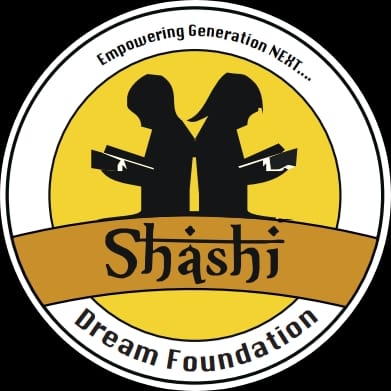Poverty is a persistent issue in India, impacting millions and hindering progress. A multi-faceted approach targeting various dimensions of poverty is essential to tackle this challenge. Here are key strategies that have proven effective:
1. Economic Growth and Employment Generation
Inclusive Economic Growth: Economic growth that benefits all sections of society is crucial for poverty alleviation. Policies promoting equitable distribution of resources and opportunities can reduce income inequality and ensure that marginalized groups benefit from economic expansion.
Job Creation: Employment generation in sectors with high labor absorption, such as agriculture, textiles, and construction, is vital. Encouraging entrepreneurship through micro, small, and medium enterprises (MSMEs) can create jobs and stimulate economic activity.
Skill Development: Investing in skill development programs enhances workforce employability, especially among the youth. The Skill India Mission aims to train millions in various trades, improving their employment prospects and breaking the poverty cycle.
2. Agricultural and Rural Development
Modernization of Agriculture: Modernizing agricultural practices through technology adoption, improved irrigation, and better credit access can significantly increase productivity and farmer income. Programs like Pradhan Mantri Krishi Sinchai Yojana (PMKSY) focus on enhancing irrigation facilities, crucial for boosting crop yields.
Land Reforms: Providing land ownership to landless and marginal farmers through land reforms empowers them economically and enhances their social status. Secure land tenure encourages farmers to invest in their land, improving agricultural productivity.
Rural Infrastructure: Developing rural infrastructure, such as roads, electricity, water supply, and sanitation, stimulates economic activity and improves quality of life. Better connectivity enhances market access for farmers and rural entrepreneurs, while improved sanitation and water supply yield significant health benefits.
3. Education and Health
Universal Access to Education: Ensuring free and compulsory education for all children up to age 14 is vital. The Right to Education (RTE) Act mandates this, but effective implementation is key. Improving education quality, training teachers, and providing adequate infrastructure are necessary steps. Education breaks the poverty cycle by equipping children with skills for better employment opportunities.
Healthcare Accessibility: Strengthening public health systems to provide affordable, quality healthcare services is crucial. Programs like Ayushman Bharat offer health insurance to millions of low-income families, reducing healthcare costs and improving medical service access. Regular health check-ups, immunizations, and maternal health services are essential components of a robust healthcare system.
4. Social Protection and Safety Nets
Public Distribution System (PDS): The PDS provides subsidized food grains to the poor, ensuring food security and reducing hunger. Reforms to improve efficiency and targeting, such as Aadhaar-based identification, can minimize leakages and ensure benefits reach intended beneficiaries.
Direct Benefit Transfers (DBT): DBT programs transfer subsidies and social benefits directly to beneficiaries’ bank accounts, reducing intermediaries and corruption. This system ensures financial aid reaches those in need promptly and transparently.
Employment Guarantee Programs: The Mahatma Gandhi National Rural Employment Guarantee Act (MGNREGA) provides a legal guarantee of 100 days of wage employment per year to rural households. This program enhances rural livelihoods, reduces urban migration, and creates valuable rural infrastructure.
5. Financial Inclusion
Access to Banking: Promoting financial inclusion by ensuring banking services for all households is essential. The Pradhan Mantri Jan Dhan Yojana (PMJDY) has opened millions of bank accounts, facilitating savings, credit access, and direct benefit transfers.
Microfinance and Self-Help Groups (SHGs): Supporting microfinance institutions and SHGs provides credit to the poor, particularly women. This financial inclusion empowers women economically, fosters entrepreneurship, and improves household income stability.
6. Housing and Urban Development
Affordable Housing: Implementing affordable housing schemes, such as Pradhan Mantri Awas Yojana (PMAY), provides secure housing to low-income families. These programs improve living conditions and reduce homelessness through subsidies and financial assistance.
Slum Upgradation: Upgrading slums with basic services like water, sanitation, and electricity, and implementing rehabilitation programs, improves the quality of life for slum dwellers. Community participation ensures sustainable solutions that meet residents’ needs.
7. Targeted Social Welfare Programs
Pradhan Mantri Kisan Samman Nidhi (PM-KISAN): This program provides income support to farmers by offering Rs. 6,000 per year in three installments. Such financial aid helps alleviate rural poverty and supports farmers in meeting basic needs.
8. Digital and Technological Solutions
Digital India Initiative: Enhancing digital infrastructure and increasing internet connectivity through the Digital India initiative facilitates access to education, healthcare, and financial services. E-governance improves transparency and efficiency in government service delivery.
9. Empowerment of Women and Marginalized Groups
Gender Equality: Implementing policies promoting gender equality and empowering women economically and socially is crucial. Women’s participation in the workforce and decision-making processes enhances household incomes and social development.
Social Inclusion: Addressing the needs of marginalized groups through targeted programs and policies ensures that everyone benefits from economic growth and social progress.
10. Environmental Sustainability
Sustainable Practices: Promoting environmentally sustainable practices in agriculture, industry, and urban development is essential for long-term poverty reduction. Sustainable resource management ensures future generations have access to necessary resources.
Climate Resilience: Implementing measures to enhance climate change resilience, particularly for vulnerable communities, protects livelihoods and reduces the risk of poverty due to environmental shocks.

Conclusion
Combating poverty in India requires a comprehensive approach integrating economic growth, social protection, financial inclusion, and sustainable development. By addressing immediate needs and long-term structural issues, India can make significant strides in reducing poverty and improving the quality of life for its citizens. Continuous investment, effective implementation, and regular evaluation of these strategies are essential for sustained progress
